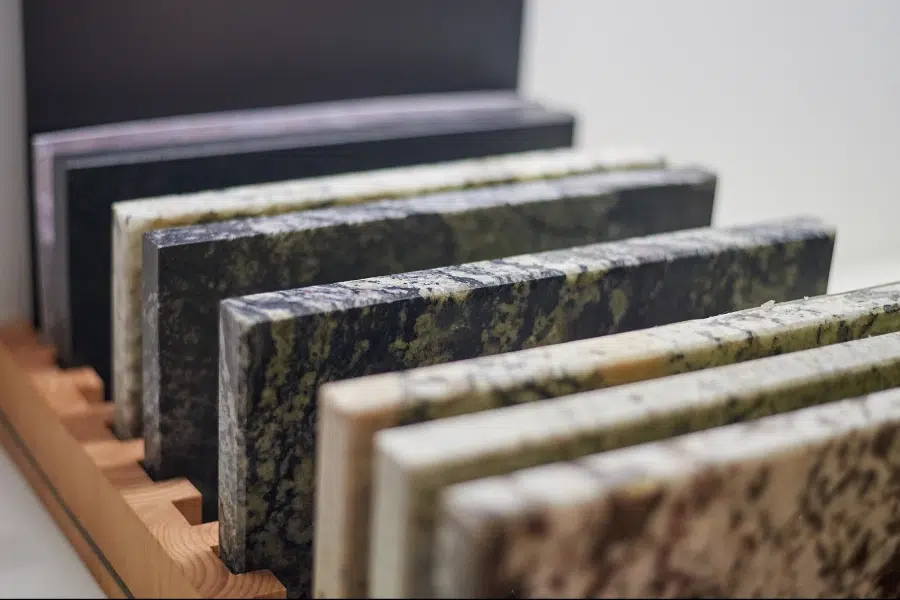How to Select the Perfect Granite Slab for Your Kitchen Project?
Selecting the ideal granite slab for your kitchen project is more than just picking a color that catches your eye; it’s about understanding the unique characteristics of this natural stone and how it can best complement your space. Granite slabs offer a combination of durability and beauty unmatched by other materials, making them a popular choice for kitchen benchtops worldwide, including Australia.
Factors to Consider Before Selecting Granite Slab For Your Kitchen Project
- Color and Pattern Consistency: Granite is renowned for its vast array of colors and intricate patterns. Consider whether you prefer a slab with a consistent pattern or one with more variation to add a unique character to your kitchen.
- Slab Thickness: The thickness of the granite slab plays a critical role in its durability and installation. Typically, slabs come in two thicknesses, 2cm and 3cm, each offering different benefits in terms of strength and application.
- Finish Type: Granite can be finished in several ways, including polished, honed, or leathered, each providing a different look and feel. Decide on the finish that best complements your kitchen’s design and your lifestyle needs.
- Sealing Requirements: While granite is naturally resistant to stains, certain slabs may require sealing to protect against spills and stains. Consider the maintenance required to keep your granite benchtop looking pristine.
- Budget: Granite slabs vary significantly in price based on their rarity, thickness, and finish. Set a realistic budget for your project while considering the long-term value granite adds to your home.

Find the Perfect Stone for
Your Project
How to Choose the Perfect Granite Slabs for Your Kitchen
Selecting the right granite slab for your kitchen isn’t just about finding a color or pattern you love; it’s about understanding how that piece of natural stone will fit into the daily life of your home. When embarking on this journey, several nuanced considerations come into play:
Visual Harmony
Lighting
Pattern and Color Consistency
Finish
Slab Viewing and Selection
How to Care for and Maintain Your Granite Surfaces
Maintaining the pristine condition of your granite surfaces requires a combination of regular care and mindful usage practices. Here’s how to ensure your granite kitchen benchtops remain beautiful and functional over the years:
Daily Cleaning
For daily maintenance, use a soft cloth and a mild detergent or a cleaner specifically formulated for natural stone slabs. Avoid acidic cleaners, which can etch the surface, and abrasive pads, which can scratch the finish. Wiping up spills immediately will prevent potential staining, especially from acidic substances like wine, coffee, and citrus juices.
Sealing
Preventing Damage
Repairing Minor Damage
Frequently Asked Questions (FAQs)
Which granite slab is best for kitchen?
The best granite slab for your kitchen combines the ideal blend of color, pattern, and durability to meet your aesthetic and functional needs. Popular choices often feature neutral tones with subtle patterns, offering versatility across various kitchen styles.
Is it cheaper to buy a slab of granite?
Buying a whole slab of granite can offer cost savings for large projects by reducing waste and matching patterns across seams. However, for smaller projects or single stone kitchen benchtops, remnants from larger slabs can provide a cost-effective alternative.
Which Colour granite is best for kitchen?
The best color for your granite kitchen benchtop ultimately depends on your personal taste and your kitchen’s color scheme. Neutral colors like beige, gray, and black are versatile and timeless, but choosing a color that personally appeals to you and complements your kitchen’s decor is crucial.
Which is better 2cm or 3cm granite for kitchen?
3cm granite is generally favored for kitchen countertops due to its increased durability and resistance to bending or breaking. However, 2cm granite can be a suitable and often more affordable option for backsplashes or smaller projects where strength is less of a concern.
Natural Stone Slab Supplier
Avant Stone brings together 20 years of stone industry experience to provide you with a range of globally sourced stone slabs including Marble slabs, Granite slabs and Quartzite Slabs.
We aim provide you quality service and distinctive stone products for your home or your commercial space. Avant Stone is the premier Stone Supplier of Granite, Quartzite and Marble slabs in Sydney.
Our showroom is located centrally in Greenacre, a mere 20 minutes from Sydney & Parramatta CBD.
Give us a call: 0298170037
Email us at: info@avantstone.com.au



